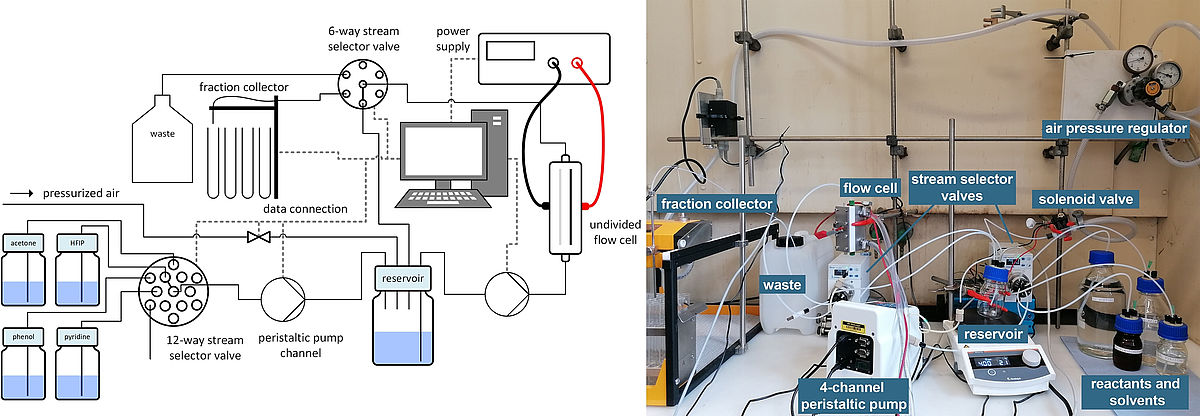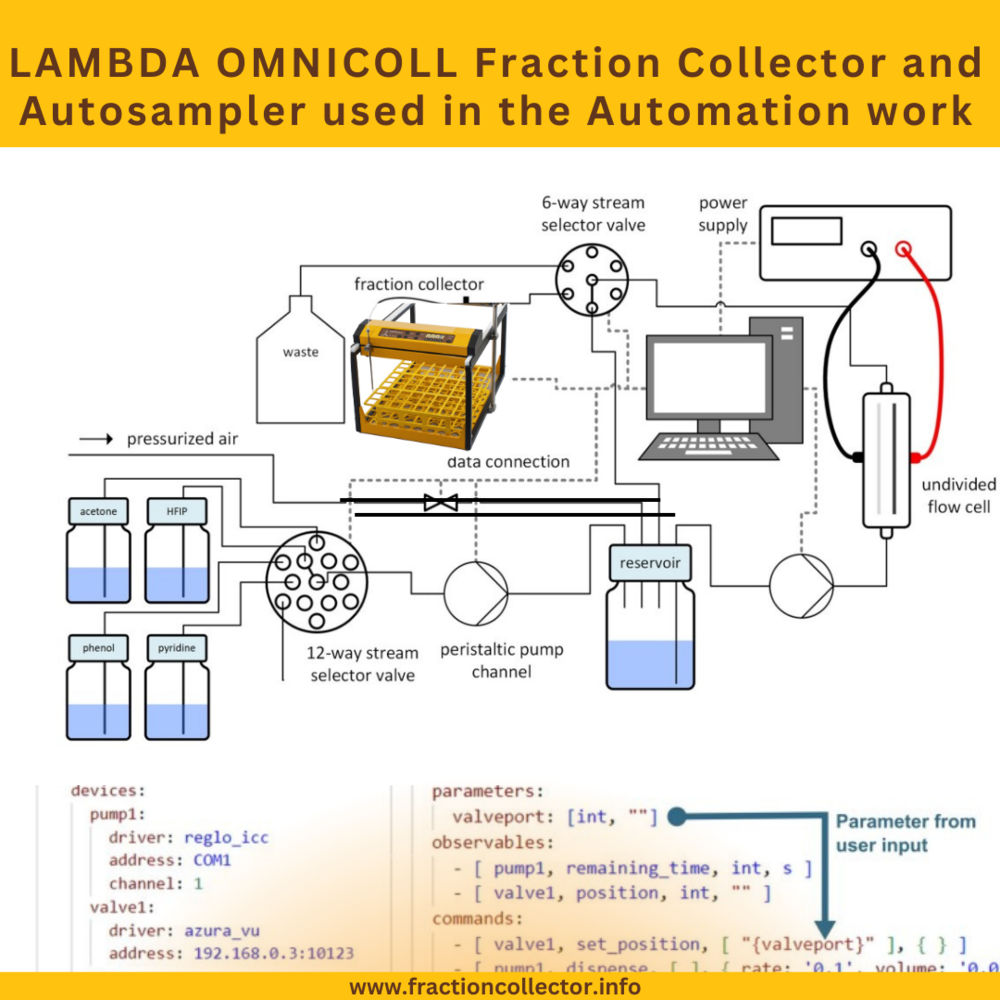LAMBDA OMNICOLL Fraction Collector and Autosampler used in the Automation work
Electrochemical synthesis is a method of producing chemical compounds or materials through electrochemical reactions. In flow electrochemical reactions, additional peripheral equipment like pumps, valves, and fraction collectors is required. Automation of synthesis enables precise control of the electrical current, voltage, and temperature during the electrolysis process, ensuring optimal efficiency and safety while producing the desired product.
Figure 1: Schematic view of the Automation process that employed LAMBDA OMNICOLL Fraction Collector.
A group of teams from Germany utilized LABS (Laboratory Automation and Batch Scheduling), a Flask-based Python software with a web-based user interface, to optimize electrolysis parameters for flow electrolysis in the experiment of oxidatively coupling 2,4-dimethylphenol to produce 2,2'-biphenol. They incorporated LABS with the LAMBDA OMNICOLL Fraction Collector and other devices, creating a comprehensive package for automated chemical synthesis. This package empowers chemists to construct automated systems for similar chemical synthesis applications without requiring extensive programming knowledge. By providing accessible Python scripts and methods, the team aims to enable a wider range of researchers to benefit from automated processes and enhance their chemical synthesis workflows.
Reference: LABS: Laboratory Automation and Batch Scheduling – A Modular Open Source Python Program for the Control of Automated Electrochemical Synthesis with a Web Interface
Maximilian M. Hielscher, Maurice Dörr, Johannes Schneider, Prof. Dr. Siegfried R. Waldvogel
Scheme depicting the automated flow setup, which facilitates continuous and cyclic electrolysis.

Figure 2: Reference: An Asian Journal, Volume: 18, Issue: 14, First published: 03 June 2023, DOI: (10.1002/asia.202300380)
The setup involves pooling electrolytes into a reservoir using a 12-way stream selector valve. The pressurized reservoir is connected to the flow cell electrolyzer. The flow cell outlet is connected to the six-port Knauer valve, which directs the flow back to the reservoir, a waste canister, or the LAMBDA OMNICOLL fraction collector. All devices are interconnected through LABS, which controls the automated synthesis. Each device is interconnected and operates as per the program performed in LABS.
The LABS system comprises two main components: a web-based user interface (Flask-Python) that serves as a frontend for users and a backend responsible for handling the logic to control the setups. The backend communicates with connected devices using the asynchronous network framework 'Twisted' and maintains a many-to-one relationship with the 'Flask' user interface. The backend and frontend tasks are executed on a Windows PC equipped with NVidia GeForce GTX 1650 and 2x Realtek PCIe GbE Family Controller for operation.
Conclusion:
The LABS software offers an open programming structure, allowing users to customize it by integrating additional sensors or measurement devices, thus creating more intricate feedback loops. The source code for both the front and backends of the software is openly available on GitHub, promoting transparency and collaboration within the developer community. The developers plan to base upcoming projects on LABS and gradually expand support for more devices, not limited to electrochemical setups, as long as these devices offer corresponding API interfaces.
